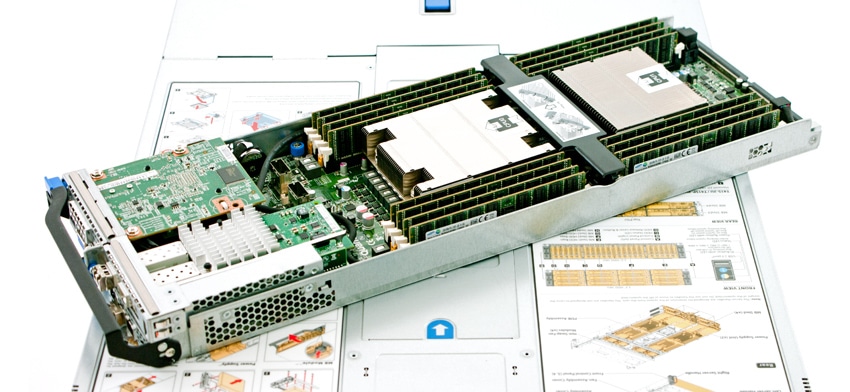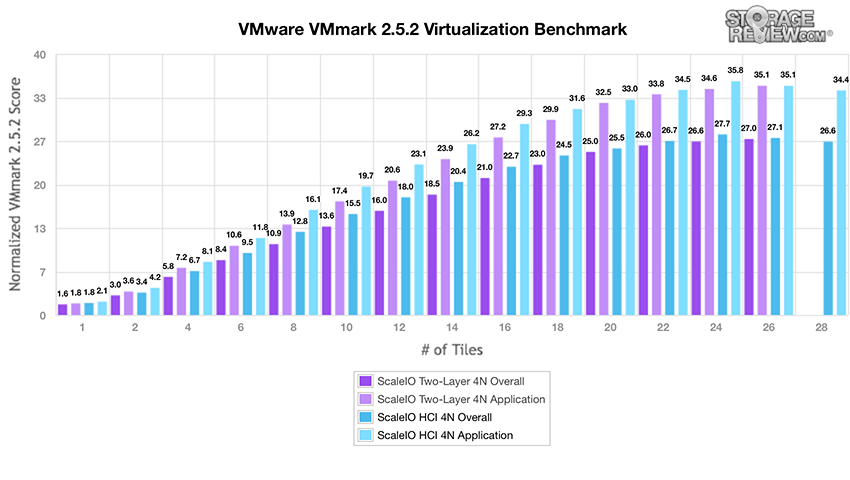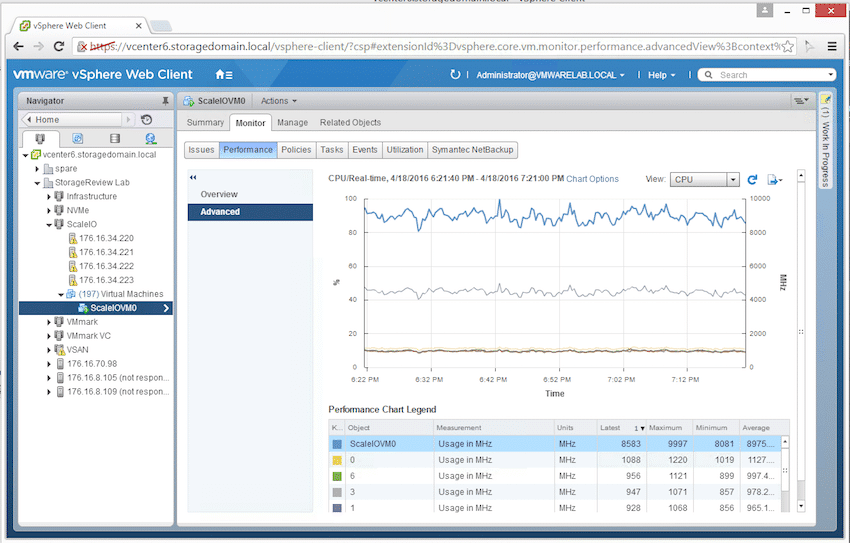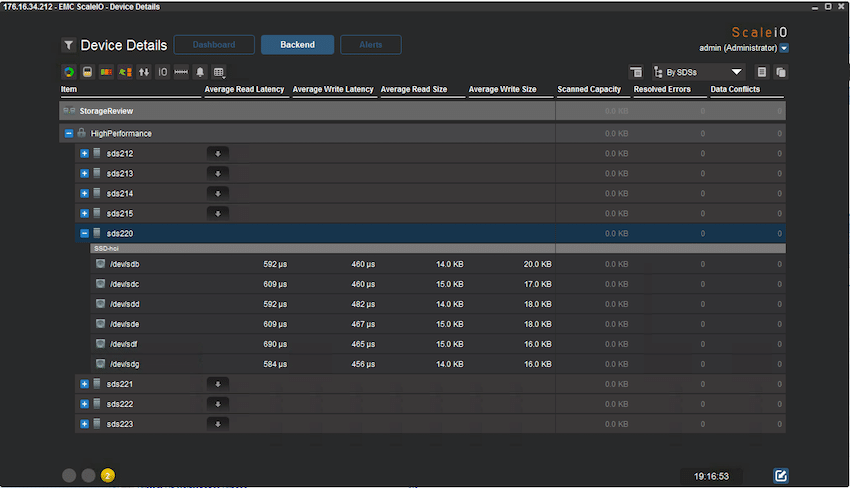When deployed in hyperconverged mode, the EMC VxRack Nodes running ScaleIO are often found running VMware. While not always the case, the nodes support just about everything, VMware is the easiest to understand from a performance perspective thanks to VMmark. When we reviewed ScaleIO running VMmark in two-layer, the all-flash VxRack Node handled 26 tiles. The system could have probably handled a few more as it had capacity to spare, but the four loadgen servers were at their max. This time we run the same benchmark in HCI, combining the storage and compute into one 2U box versus the 10U total in the two-layer test. In this test the efficiency of the management software will be obvious as the box will be at saturation points everywhere; storage capacity, CPU utilization and RAM footprint will all be under duress.

VxRack Node (Performance Compute All Flash PF100) Specifications
- Chassis – # of Node: 2U-4 node
- OS: ESXi vSphere 5.5
- Processors Per Node: Dual Intel E5-2680 V3, 12c, 2.5GHz
- Chipset: Intel 610
- DDR4 Memory Per Node: 512GB (16x 32GB)
- Embedded NIC Per Node: Dual 1-Gbps Ethernet ports + 1 10/100 management port
- RAID Controller Per Node: 1x LSI 3008
- SSDs Per Node: 4.8TB (6x 2.5-inch 800GB eMLC)
- SATADOM Per Node: 32GBSLC
- 10GbE Port Per Node: 4x 10Gbps ports SFP+
- Power Supply: Dual 1600W platinum PSU AC
- 10GbE Switching Hardware
- Front-End Ports: Mellanox SX1036 10/40GbE Switch
- Back-End Ports: Cisco Nexus 3164 10/40GbE Switch
VMmark Performance
VMmark tiles take up roughly 320GB of space across the 8 VMs each of them contains. While in our two-layer review of VxRack Node, we used external hosts to drive the workload, in the HCI setup the storage hosts themselves perform that task. We start with a one tile score, then move to two tiles and step in 2-tile increments from there. In our standardized ESXi 6.0 environment leveraging Dell PowerEdge R730s, we see 26 tiles be the post where CPUs being saturated to the point of diminishing returns.

This ScaleIO HCI environment operates on ESXi 5.5, which is the supported and recommended VMware hypervisor at the time of testing. As you can see above, going head to head against its two-layer configuration, ScaleIO not only matched, but instead, exceeded the performance running in HCI with storage overhead factored in. EMC's ScaleIO VxRack Node running in HCI hit an incredible 28-tiles, without even using top-bin CPUs.

Diving into the ScaleIO SVM on one of the hosts, we can see that under a full 28-tile load, CPU overhead floated around 8,500MHz. This works out to 14% per host, with a recording-smashing performance run. While that feat is quite impressive, drilling down into the storage controller itself, we see SSD latency at the device level is barely breaking a sweat.

Out of the six SSDs per host, read latency is floating near 0.6ms while write latency is under 0.5ms. In other words at total CPU saturation, capacity filled to the brim and a 28-tile VMmark run underway… ScaleIO hardware still wasn't pushed to the brink. This is good news, since if a drive fails, VMs need to migrate or backup tasks hit the cluster, there is still bandwidth and IOPS leftover so workloads aren't impacted.
Conclusion
It's rare in the enterprise storage market that claims such as incredible performance and very-low overhead play out as well as we've seen with EMC's VxRack Node powered by ScaleIO. In this testing with VMmark, we learn (or re-learn) the ScaleIO management overhead is extremely low. We've seen this before in the HCIbench and SQL tests when the system was configured for HCI, but this workload is much more intensive with a large data footprint and in HCI this test even eats up even a little more capacity than in two-layer at the top end. The HCI config is also at a CPU penalty compared to two-layer (E5-2680 vs E5-2690), which makes the scalability gain even that much more impressive. While there is a variance in ESXi version used, the HCI configuration did more with less compute power. It will be interesting to see what happens if EMC leverages newer or denser Intel CPUs giving customers the benefits of additional cores or clock-cycles.
EMC VxRack Node Review: Overview
EMC VxRack Node Powered By ScaleIO: Scaled Sysbench OLTP Performance Review (2-layer)
EMC VxRack Node Powered By ScaleIO: SQL Server Performance Review (2-layer)
EMC VxRack Node Powered By ScaleIO: Synthetic Performance Review (2-layer)
EMC VxRack Node Powered By ScaleIO Review: Synthetic Performance Review (HCI)
EMC VxRack Node Powered By ScaleIO: SQL Server Performance Review (HCI)




 Amazon
Amazon